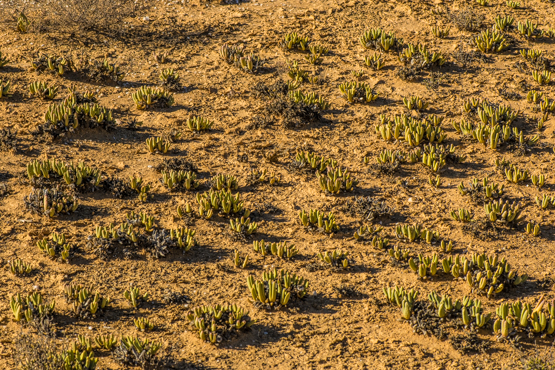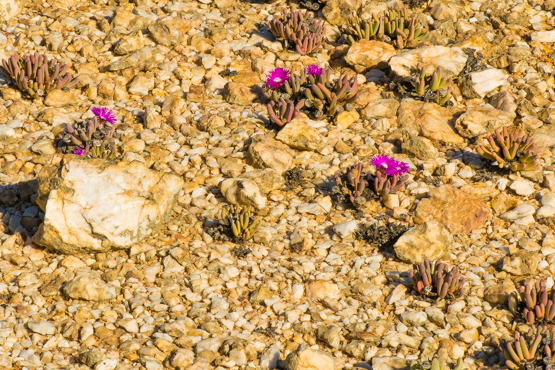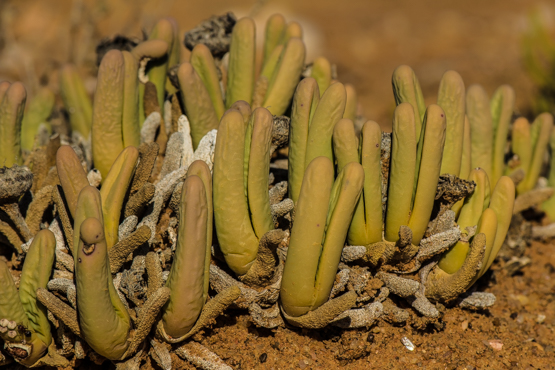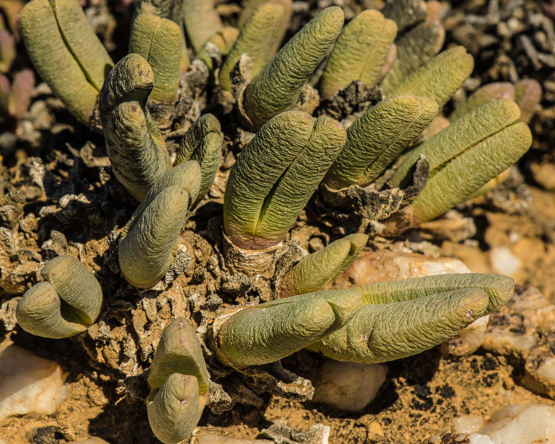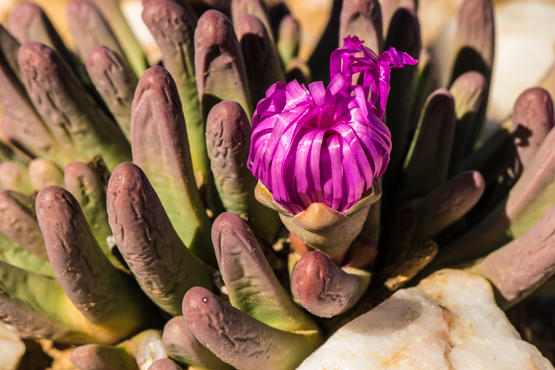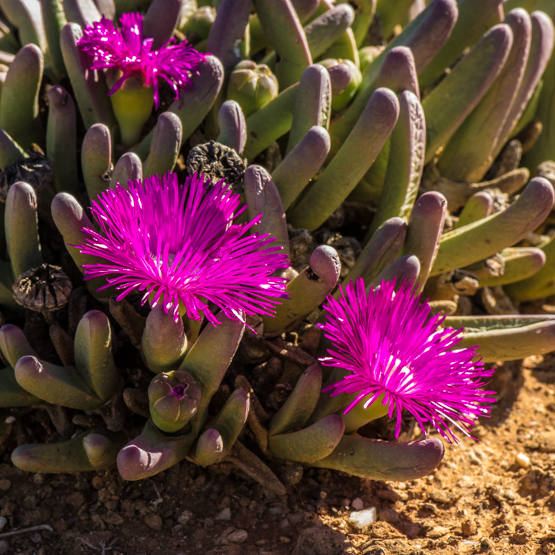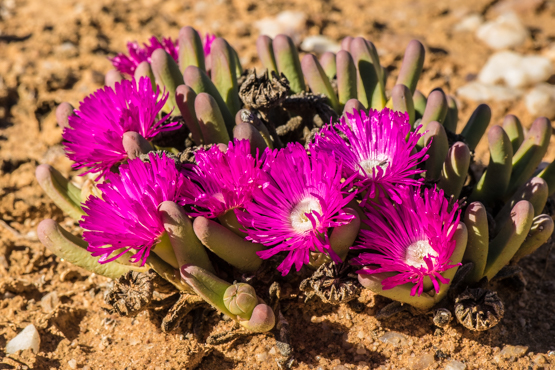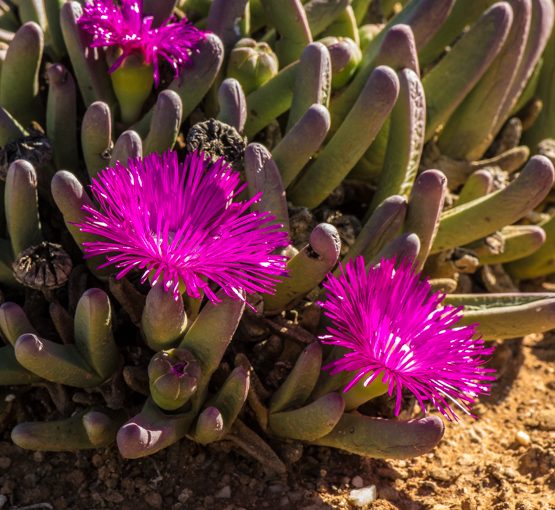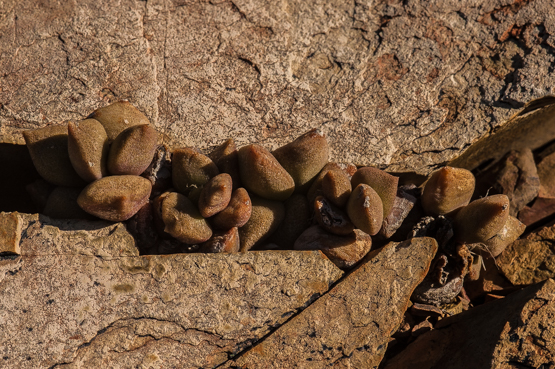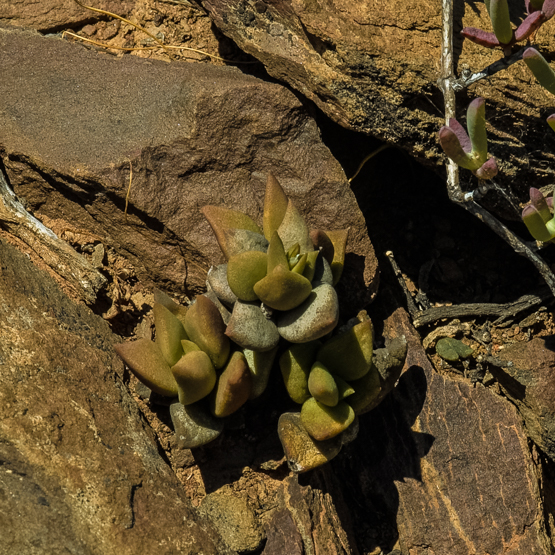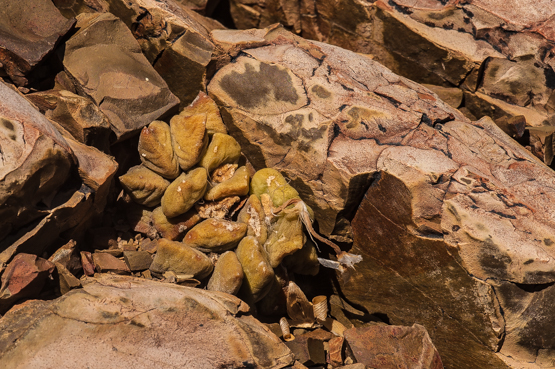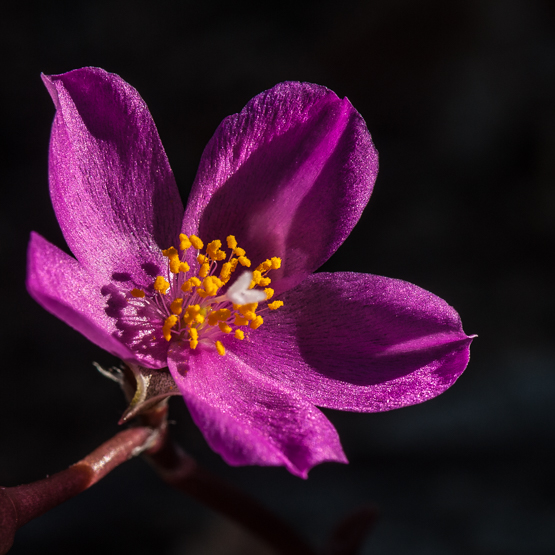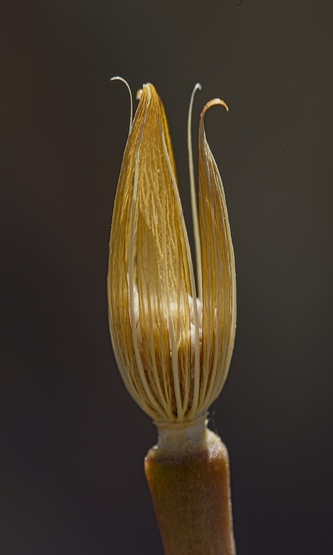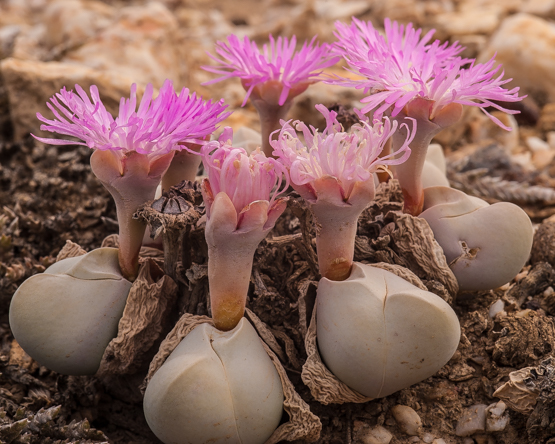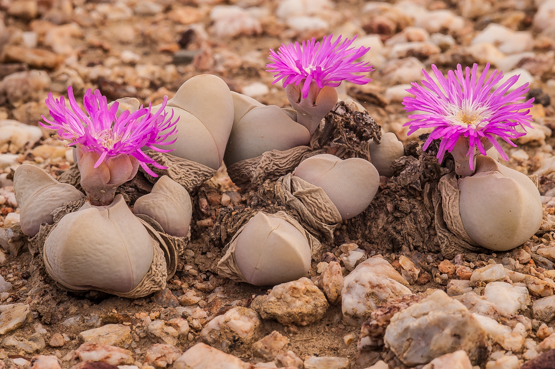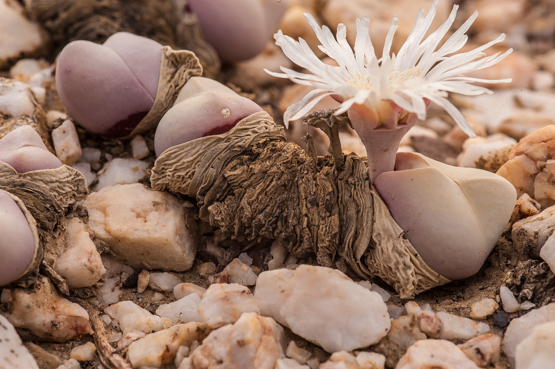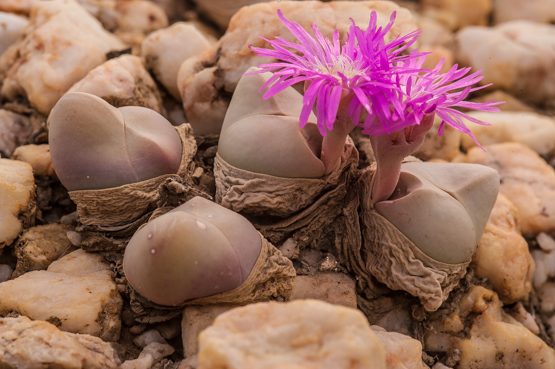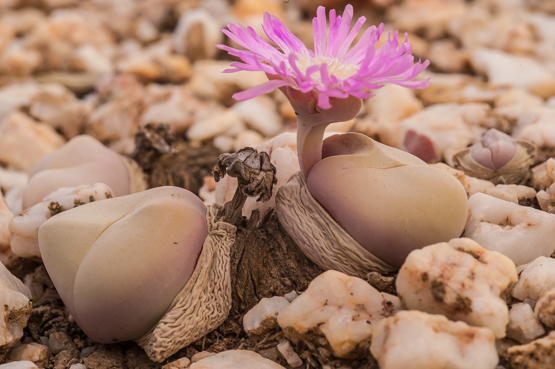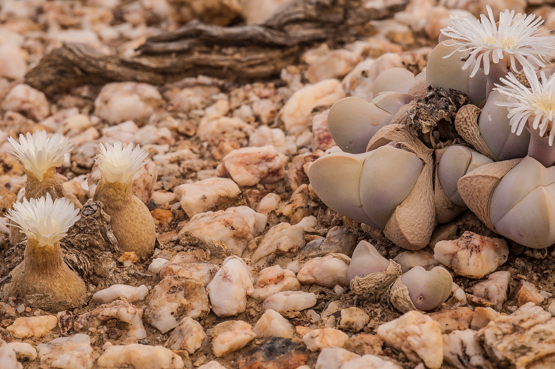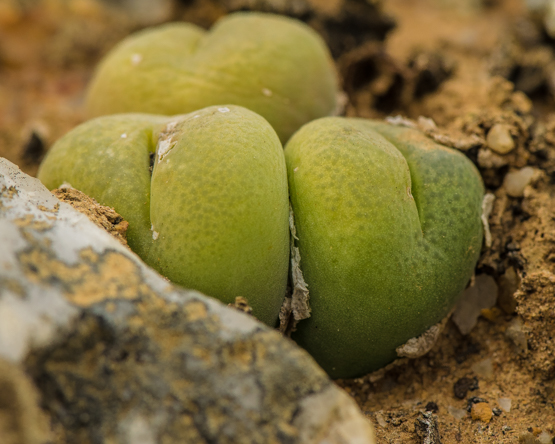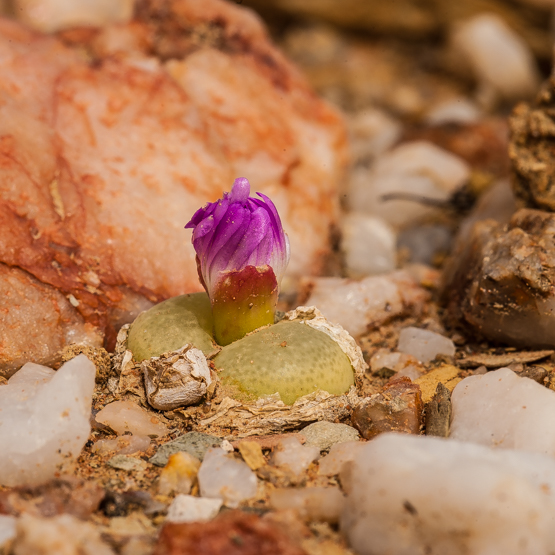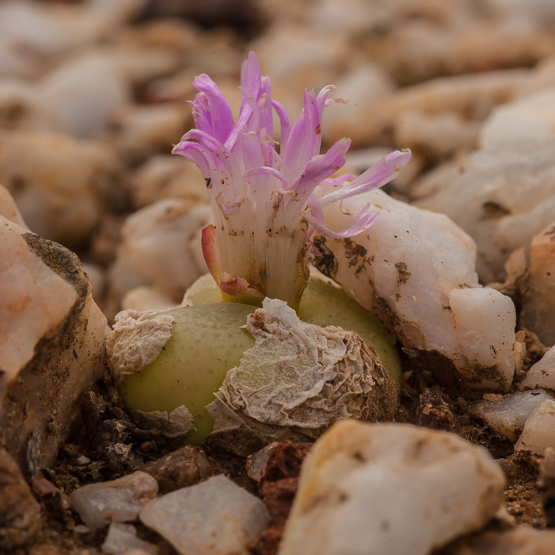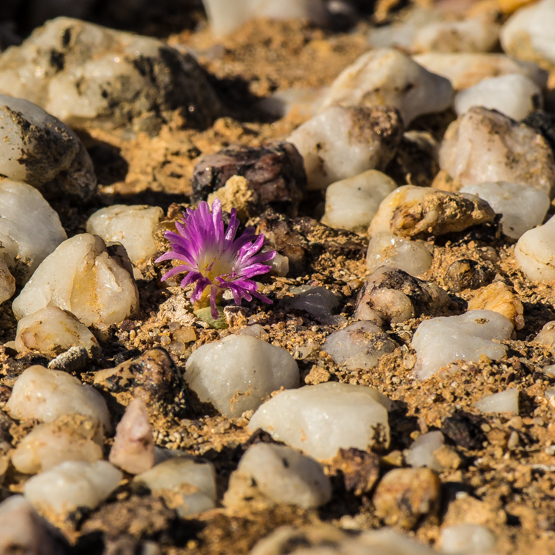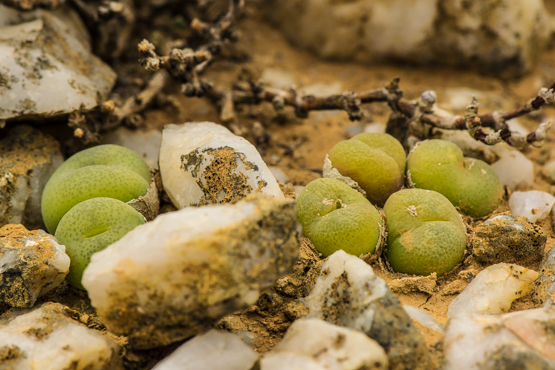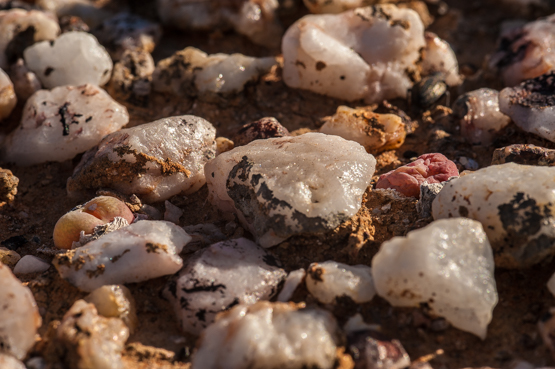A. fissum is said to be the most primitive of the Argyrodermas.
Often the word primitive has a somewhat negative connotation, but in biology that is not the case. There it means things such as:
characteristic of an early stage of development or
not very much evolved from its ancestors and therefore less specialised.
The result is that A. fissum looks rather different from other species in the genus.
It is the most common and widespread Argyroderma, occurring from N. of Klawer to N. of Bitterfontein, often found on loamy flats and hillsides next to quartz gravel and in full sun. It often occurs in great numbers.
The rainfall in the area is less than 100 mm per year and typically occurs in winter.
With age the plants form mats of up to 30 cm across. As they get older, the centre dies off, but new branches keep appearing at the outside of the clumps.
The leaves are finger-shaped, 1.2-6 cm long and 0.8-1.8 cm wide and grey-green to bluish-green, often with yellowish or purplish tips and margins.
There is a great variation in the colour and size of the flowers; they are up to 4.5 cm in diameter and may be yellow, mauve or magenta, sometimes bright red, often with a white centre. They appear in June – September.
